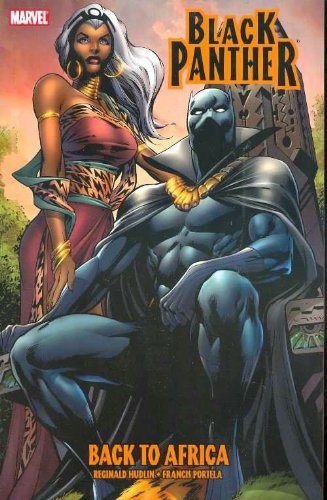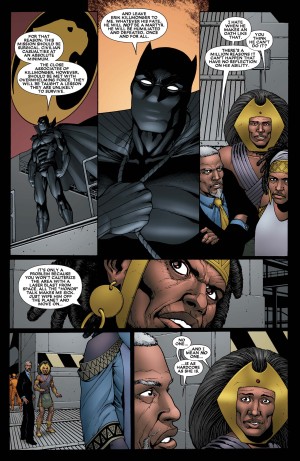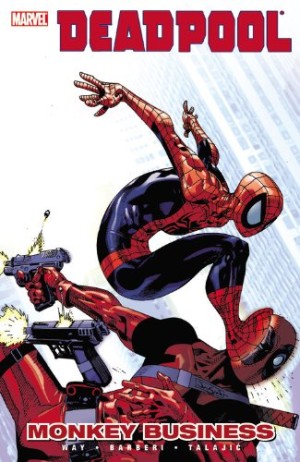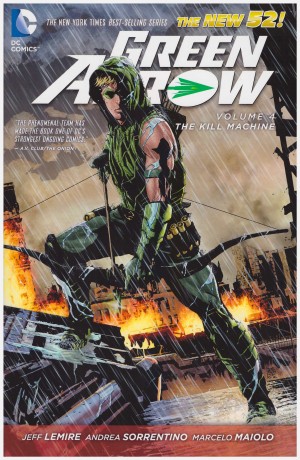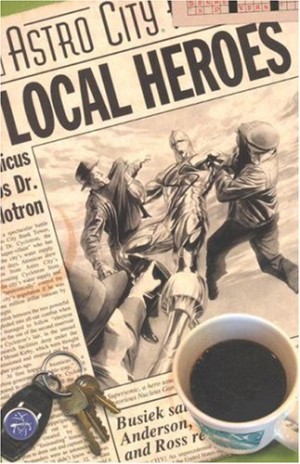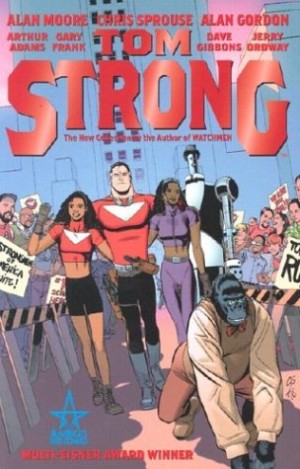Review by Ian Keogh
This volume concludes Reginald Hudlin’s very patchy run writing Black Panther. The Panther and friends have been jumping through space and the dimensions for the previous two books, and Hudlin now returns them to Wakanda to conclude subplots not mentioned since the opening chapters of Four the Hard Way.
It’s nice to note that Hudlin departs on a high note. He returns one of the Panther’s greatest enemies, and this time someone has ensured Killmonger doesn’t need to rely on raw power, although he’s never lacked for that. There’s a good revelation as to who’s pulling the strings, even if they set up their vast state of the art facility in double quick time, and it’s a logical explanation for otherwise very strange events. The story’s dragged on a little at four parts, but is fundamentally sound, and without the dialogue problems that plagued the previous Little Green Men.
As in the previous book, the pencilling shifts through assorted artists beginning with Cafu. It’s Francis Portela who carries the bulk of the Killmonger story, though. He’s not quite as impressive as previously, and two additional artists, Carlos Rodriguez and Kevin Sharpe, required for the finale indicate deadline problems. At times the fine-lined elegance shines through, and on other pages it’s bizarrely muscled figures.
Hudlin’s actual finale is a Black Panther annual, created to tie in with awareness of black history, a topic Hudlin’s prioritised throughout the series. He leaps forward to a time when the Wakandan royal family has become a dynasty that oversees Earth, revealed to be in the relatively near future when T’Challa and Storm have several teenage children. A parallel narrative relates the Wakandan response to the slave trade of the 1700s.
This is pencilled by Larry Stroman and Ken Lashley, the partition of duties corresponding to which of the stories is being told. Stroman’s layouts are eye-catching, but his people are odd-looking, unfinished, while Lashley’s storytelling isn’t as attractive. His designs are effective, though, and he provides a spectacular giant robot.
For all the good intentions, this isn’t the best of Hudlin’s work. The sequences set during the slave trade period are the best, with the remainder relatively ordinary, although he whimsically ties up one last plot on the final page of the book.
In terms of continuity the next volume is Secret Invasion, but this is Hudlin’s swansong. His tenure began well, but has presented unconvincing dialogue throughout, and every triumph has been balanced by a much lesser collection.
